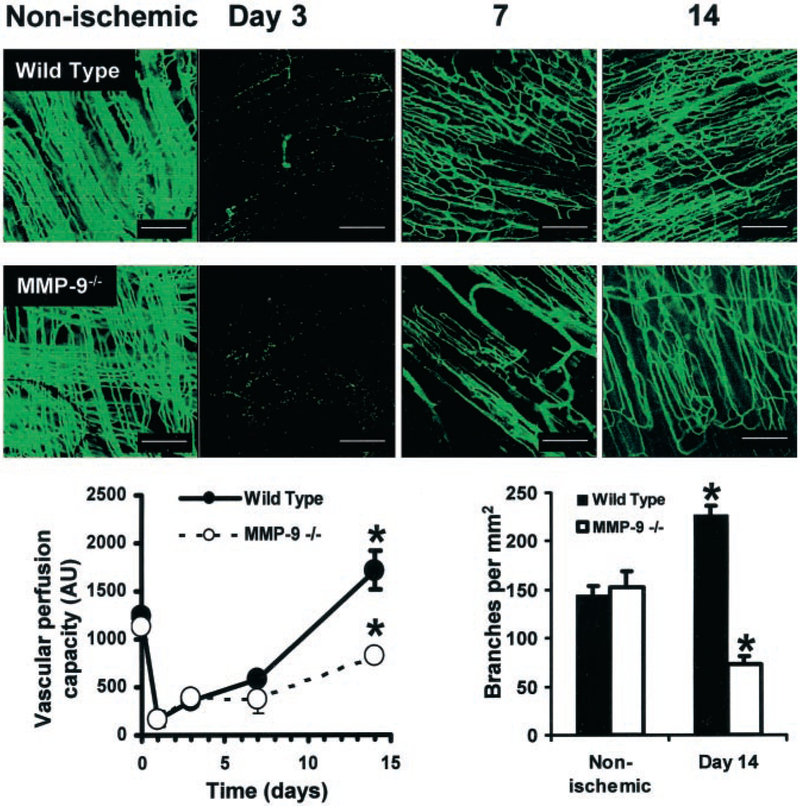Figure 3.
MMP-9 deficiency decreases restoration of microvascular perfusion capacity in response to ischemia. Time course of perfusion capacity imaged on whole-mount tissue specimens using fluorescence microangiography (scale bars=200 μm). Nonischemic muscle contains numerous perfused capillaries with no apparent differences between WT and MMP-9−/− mice. The number of perfused capillaries drops dramatically after femoral artery ligation, illustrated at day 3 in both WT and in MMP-9−/− tissues, in spite of existing anatomical structures (illustrated by specific staining in Figure 2). Perfusion capacity is significantly better restored in WT tissues compared with the MMP-9−/− tissues (day 7), and actually becomes higher than the baseline at day 14, whereas it remains deficient in MMP-9−/− tissue, supporting the role of MMP-9 for proper revascularization. In addition, note the increased number of points of capillary intersections, indicative of branching, and increased tortuosity in WT compared with MMP-9−/− ischemic tissue (day 14) or compared with nonischemic tissues. Vascular perfusion capacity of adductor muscle (left graph), quantified as fluorescence extracted from tissue homogenates (n=4 animals per point), dropped dramatically after femoral artery ligation in both WT and MMP-9−/− tissue. By 14 days, WT vascular perfusion capacity surpassed initial capacity, indicating robust revascularization and angiogenesis, whereas in the MMP-9−/− ischemic tissues, perfusion capacity remained lower than initial capacity (*P<0.05 vs WT 14 day), illustrating blunted revascularization. Quantification of capillary branching density (from confocal microscope images of tissues, n=4 animals for each point) indicated a significant increase in branching density in the WT after 14 days compared with normal nonischemic tissues (*P<0.05 vs nonischemic). On the other hand, MMP-9−/− ischemic tissues had a decreased density of branches at 14 days (*P<0.05 vs WT), suggesting that lack of capillary branching contributed to decreased perfusion capacity.

